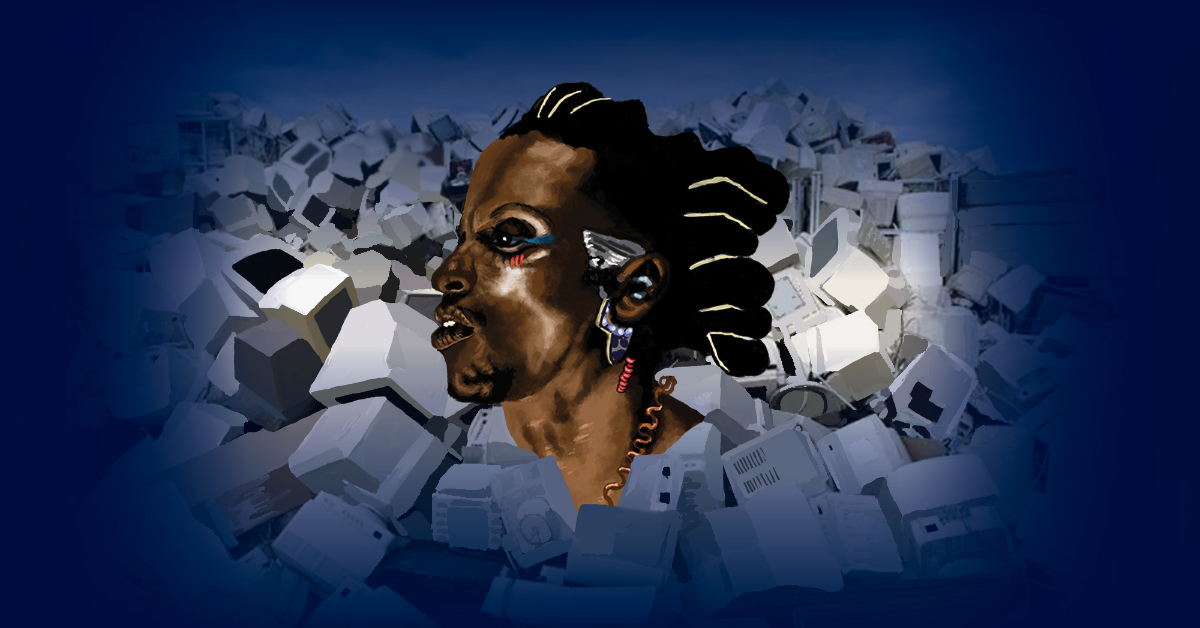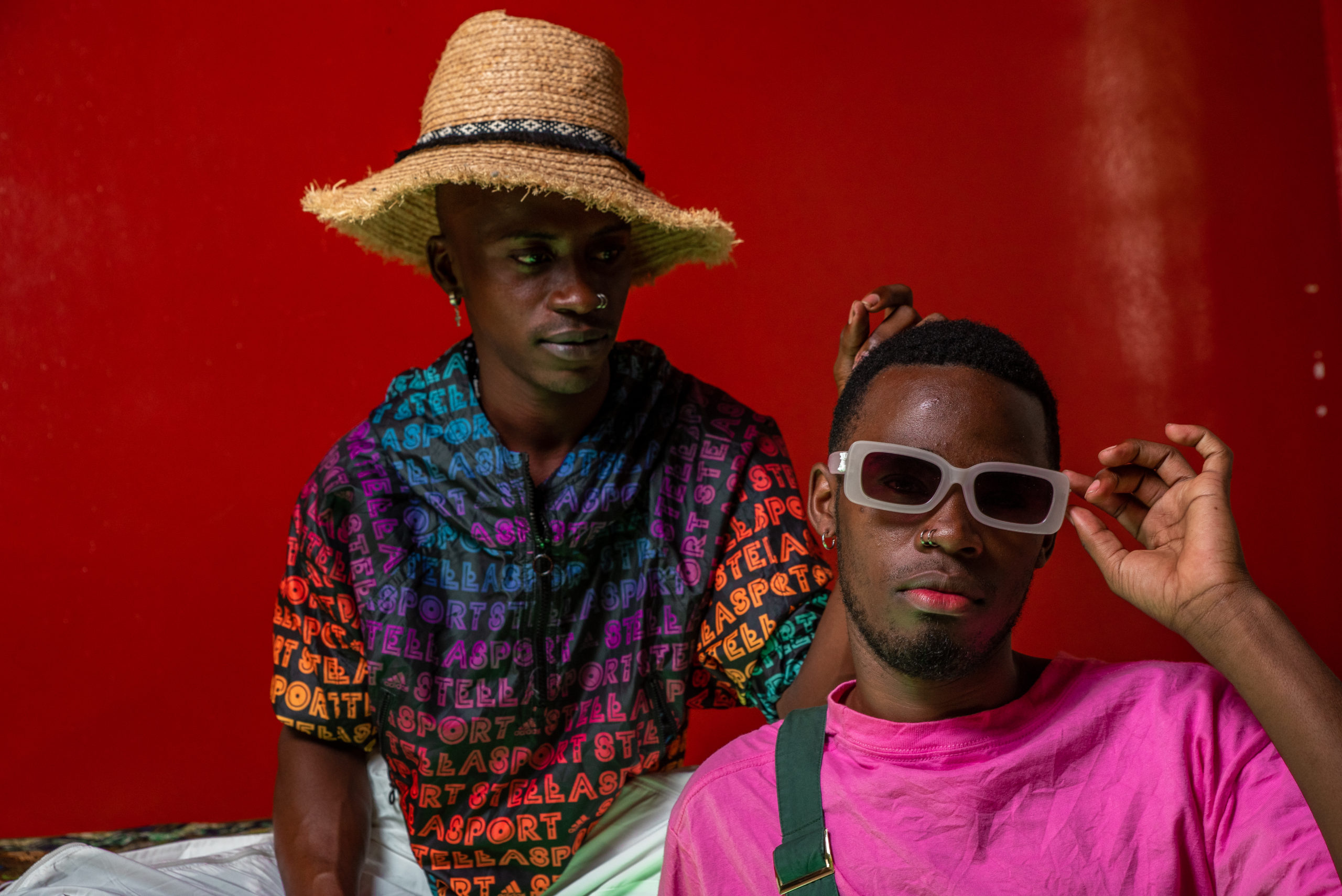A Rwandan afrofuturist musical constitutes dreaming as resistance
- Neptune Frost is an Afrofuturist musical film that follows coltan mine workers who escape and meet other outcasts to find a community in an abandoned village named Digitaria.

For marginalized communities, imagination is a solid and suitable tool of resistance against systems of oppression. Stacey A. Gibson explained this best when she wrote, “Often, imagining is an act of liberatory adventure, since it feels borderless, boundaryless, and free of the constructs that bind. To imagine is to transcend. The imaginer can time travel, hover, disappear, and multiple selves can be constructed, observed, and nurtured.”
Afrofuturistic work has therefore been one of the avenues in which this has been accomplished. According to Ytasha L. Womack, Afrofuturism is an intersection of imagination, technology, the future, and liberation.
To expand on that definition, Ingrid Lafleur, an Afrofuture strategist, said that she sees Afrofuturism as a way to encourage experimentation, reimagine identities, and activate liberation. The charmingly eccentric film, Neptune Frost, embodies these definitions meticulously.
Set in Rwanda, Neptune Frost is an Afrofuturist musical film that follows coltan mine workers who escape and meet other outcasts to find a community in an abandoned village named Digitaria. They proceed to form an anti-colonialist computer hacker collective, in an attempt to overthrow the authoritarian regime that is exploiting the region’s natural resources and its people.
In a conversation that followed the premiering of the movie in Toronto, Saul Williams, who wrote and co-directed this marvel with his spouse Anisia Uzeyman, said they wanted to address global issues creatively. “I wanted to find a way to talk about the stories and realities that were happening around the world without preaching, and fiction was the best avenue to do this,” he said.
After watching the film, I guarantee that Williams and Uzeyman achieved this goal through their artistry and the significant input of the talented cast and crew from Rwanda and Burundi. Williams’ musical and poetic analogies were useful in creating the world of this unorthodox story. Neptune Frost addressed themes like queerness, dreams, capitalism, anti-blackness and resistance while unfolding in an unconventional narrative the same way a poem or a song would.
Williams created the soundtrack Unanimous Goldmine, named after a greeting of the people in Digitaria “ikirombe cya bose,” a slogan that upholds the idea of collective ownership of wealth. The soundtrack accompanies this poetic script and creates an ethereal harmony that aligns ideally with this alternate realm. For instance, in one of the songs, the outcasts sing of the exploitation that happens to them. They sing “Imbunda zanyu n’amasasu nitwe tubyishyura,” meaning “we pay for your guns and bullets.” In line with this, there is a scene where we see miners digging and we hear the narrator, Neptune, speaking of how historically Black bodies has been currency for ages.
Collaborating with prolific Rwandan and Burundian artists, of different fields, is what breathed splendor and freshness into this film. With the help of Rwandan and Burundian musicians and poets like Eric “1Key” Nganga, Kivumbi King, Bertrand “Kaya Free” Ninteretse and Cecile Kayirebwa, Williams and Uzeyman were able to engineer the narrative predominantly in Kinyarwanda and Kirundi.
In an ASCAP screen time episode, Williams said that Rwanda was a star in the movie as well. Indeed, the green landscapes are dazzling. It is uncommon for Rwanda to be seen as the star or the home of stars in the film industry. Neptune Frost invites the audience to see that there are potential extraordinary stories to be told and dreams to be brought to life in this African nation, not just by an outsider but by its people.
The renowned filmmaker, Djibril Diop Mambety asserted that cinema was essentially born in Africa because of the abundance of our oral histories. “Oral tradition is a tradition of images. What is said is stronger than what is written; the word addresses itself to the imagination, not the ear. Imagination creates the image and the image creates cinema, so we are in direct lineage as cinema’s parents,” he explained. On that account, Rwanda would be a great place to continue creating from. In a conversation I had with Manzi Mbaya, a Rwandan dancer who was both a choreographer and an actor in the movie, he affirmed that Rwanda is absolutely brimming with talent. ”What needs to be done is more collaboration and investment in ideas,” said. I agree with him.
Speaking of talent, the world of Neptune mainly owes its allure to the visionary Cedric Mizero, a Rwandan artist, who was the production designer, art director, and costume designer of this movie. With Uzeyman, who was also the director of photography, they created the hypnotic aesthetics that further enhanced the visual glamour of the film.
Uzeyman said that their visual aesthetic was inspired by learning about the existence of e-waste villages where technologies that are not used anymore go to die. Uzeyman mentions that these villages are in proximity to coltan mines. As we experience, Mizero understood the vision and then incorporated these two existing places in building the set with such brilliant precision and creativity. Using literal electronic waste, Mizero intricately designed the remarkable costumes and setting for the characters.
I discussed the creation process with Mizero and he emphasized that the making of this film was grounded in freedom. “The directors urged the whole team to take ownership of this story. In that spirit, even though I had an extensively researched mood board, I chose to leave so much room for improvisation while on set,” he explained. “I didn’t want to work in an academic type of way. It was more free. In the end, I decided to make it very easy.”
Mizero further elaborated on his design process. “I wanted the feeling of the costumes to be that the people of Digitaria made their own costumes.” His response reminded me of what Mambety said, “A costume is not an ornament, it is the reflection of a situation.” In light of this, the agency and resistance of the characters in this story is therefore not only perceived in how they act and what they say, but it is also embroidered in their styles.
I asked Mizero what this film meant to him and he said, “It is a voice; it’s our voice, the artists who took part in it. It is also a platform for whoever faces the same issues to raise their voice.”
As a poet, each scene in Neptune Frost simulates a stanza. Each scene moved me differently, similar to what happens when I read or write poetry. When Neptune wore heels, I was moved by the queer representation that was unfolding on my screen. I sang along with coltan miners when they sang about their bodies as currency. The dialogues seemed like metaphors for discourses about the injustices that are happening currently. The sight and sound of Burundian drums at the end lingers on my mind just like the questions that Neptune ponders upon at the beginning do. Evidently, every aspect of this film is rich.
When I asked Elvis Ngabo, who played Neptune, one thing that should stay with the audience, they said, “it is that no one should be abandoned. There should be a place for everyone.” In Digitaria, the perspectives and dreams of the othered are welcome, and we recognize the resistance that is born when they commune. Certainly, the most recurring theme of Neptune Frost is the power of community even in the way that it was made; artists of different niches came together to bring this complex film to life.
Edited by Caleb Okereke and Uzoma Ihejirika.
Dushime Uwonkunda Sylvie was born and raised in Rwanda. They are currently a sophomore majoring in Communication and minoring in Africana Studies at Northwestern University, Qatar. Their politics are informed by Black feminist theory; and they hope as a collective that we rally for the liberation of all oppressed people. They are passionate about poetry and other forms of storytelling, how it brings about change, and the catharsis it offers to the reader and the writer. I want to continue achieving the same goals in my own academic and creative storytelling.



